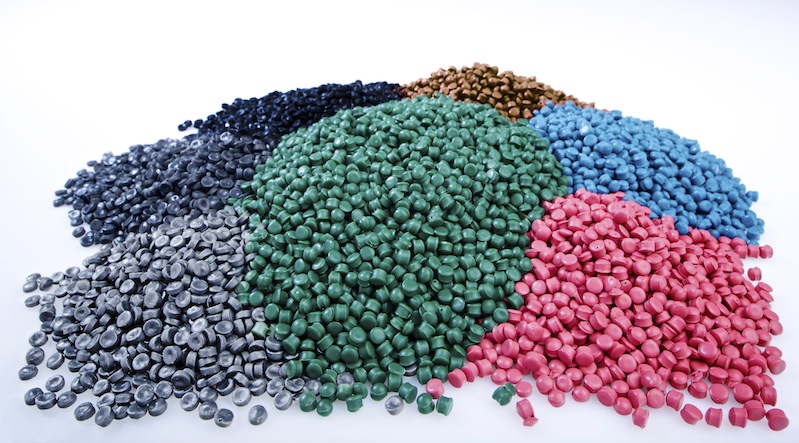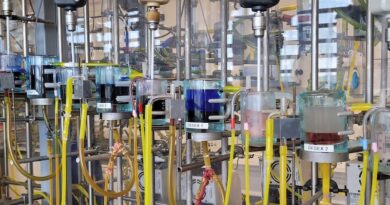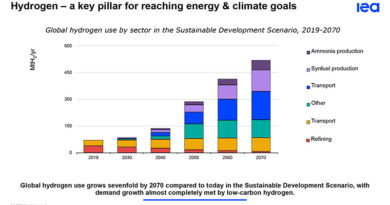
Turning plastics wastelands into fields of gold
Plastic is a valuable and important material, but is has some significant drawbacks. In the current linear plastics economy, plastics are developed to last in perpetuity, but are often still designed to be disposed of after use.
Only 5% of the value of plastic packaging materials remains in our economy, 95% of the value leaks away, leading to an annual bill of up to EUR 105 billion. The Commission is absolutely right in saying that we can simply not afford this.
In this regard, I welcome the Plastics Strategy as a crucial step forward in our transition to a circular economy. Boosting recycling rates and preventing the generation of new plastic waste upfront are key.
However, if we really want to move towards a New Plastics Economy, in which we find new smart and circular ways to manage plastics throughout the entirety of the value chain, a more holistic and integrated vision is needed.
The focus of the Commission’s Strategy is still very much on sustainable plastics as a material rather than on a sustainable and circular model. We need a more radical paradigm shift.
Creating a Single market for recycled plastics materials
Until now, the uptake of recycled plastics in new products remains low: only around 6% according to the Commission’s figures, something it is eager to address. During the plenary debate on January 17, Vice-President Katainen was clear: “Our objective is to support the creation of more stable markets for recycled plastics and ensure the demand for recycled plastics is multiplied by four.” How do we follow through and actually achieve this?
In this article I would like to present my ideas for three key building blocks to create a genuine single market for secondary plastics.
1. Quality standards for building trust
It is clear that quality standards are essential in order to stimulate the market for secondary plastics. There is currently a mismatch between the quality of recycled plastics and the quality needed for the functionality of a certain product.
If recycled plastics are used at all, everybody wants the very best quality, even though this is not always necessary for all applications: for example food grade quality is not required to make garden furniture.
This is due to a lack of trust, verification and transparency. We therefore need to develop recycling grades which match with the functionality of various products.
Verification is key in this regard. A European audit scheme is already available for use, EuCertPlast which has been developed by industry. This scheme allows for audit controls to be conducted at the company level.
However, I believe that an independent third party certificate, which conducts controls also at the material and product levels, could equally offer an important step forward.
The Belgian Quality Association has developed a QA-CER certification scheme to this end. QA-CER understands that providing confidence to the various stakeholders involved, through accessibility, traceability, transparency and independence, is essential in order to boost the use of recycled content in new products.
2. Push for recycled content
Trust in verified quality standards is a necessary first step to boost recycled content. Some companies already use recycled content. I still find the Ocean Plastic Project of Ecover an inspiring example because they use recycled ocean plastic in their bottles and thereby also engage in awareness raising on the devastating consequences of marine litter.
However, to really pull the market in a certain direction, we need clear engagement from big industry players. Positive pledges like Danone’s commitment to make its Evian
plastic bottles from 100% recycled plastic by 2025, Coca-Cola’s intention to use on average 50% recycled content in its bottles by 2025, and Unilever’s global commitment for 25% recycled plastic content by 2025, can be real game changers.
It will be very interesting to see how big players will start coupling their brand identity to a sustainable and circular business model. The new rules on Extended Producer Responsibility, agreed in the revised waste legislation, can also play a powerful role here.
3. Design for circularity in procurement
Procurement and design for circularity are a third important building block to create a single market for recycled plastics. A Green Deal on circular procurement is currently ongoing in Flanders, initiated by Circular Flanders and inspired by an earlier Dutch example.
This shows the power of both public and private procurement to boost innovation in business models. Nevertheless, circular procurement is still the exception, not the rule.
In order to boost it, various actions could be taken, also at EU level, by stimulating and supporting innovation, research and the exchange of best practices.
The EU could set up an EU learning network on circular procurement so that the lessons learnt from various Green Deals are gathered and offer support for the establishment of future Green Deals. Furthermore, lessons learnt from voluntary bottom-up actions could pave the way for establishing binding rules for public circular procurement.
Conclusion
The Chinese import ban on plastics waste offers an immense opportunity for the EU to shift into forward gear. We need to use this momentum to invest and innovate.
If we succeed in developing a holistic approach covering the entire value chain through circular business and consumption models, we can create a win-win situation for all stakeholders involved.
We can turn plastics wastelands into fields of gold!




